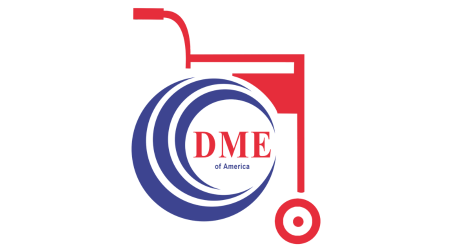Respiratory devices play a great part in a session of the treatment and management of respiratory conditions in medical facilities.
Respiratory devices extra oxygen to the patient's lungs, helping with mechanical ventilation, and airway clearance is essential for maintaining the function of respiration and supporting patients who have respiratory insufficiency, sleeping apnea, asthma, COPD, and other respiratory disorders.
Oxygen Therapy: Respiratory Devices
DME oxygen concentrator therapy apparatuses lie at the heart of pulmonary sufficiency or hypoxemia in patients who depend on supplemental oxygen to breathe fully.
Although nasal cannulas and masks can supply appropriate oxygen, concentrators are better at delivering high flow rates and may alleviate respiratory distress, including shortness of breath and cyanosis.
Their respiratory devices are just as instrumental in ensuring that the oxygen levels in patients with pneumonia, ARDS, COPD, and other issues remain appropriate.
Mechanical Ventilation:
Ventilators and BiPAP machines which are ventilation devices, offer respiratory devices support to patients with inadequate breathing and have life-saving potential.
These machines monitor patients’ breathing patterns, deliver breaths at a set pace, make the breaths adequate in terms of oxygenation and create healthy ventilation, and help support patients during respiratory failure or critical illness.
Ventilation is an important medical apparatus in managing critical conditions such as respiratory failure, pneumonia, sepsis, and neonatal RDS.
CPAP and BiPAP Machines:
The two machines, namely, continuous positive airway pressure (CPAP) and bilevel positive airway pressure (BiPAP), are the main treatment tools for obstructive Luna G3 APAP sleep apnea (OSA) and other respiratory conditions related to sleep.
Such respiratory devices blow pressurized air into the airways, preventing the airways from collapsing and play a crucial role in vehicular air pollution and climate change, it is imperative to implement air quality management strategies.
Sleep quality and fatigue will be improved along with symptoms of sleep apnea such as snoring and daytime sleepiness are reduced by CPAP machine DME and BiPAP therapies.
Respiratory Devices: Nebulizers
Roscoe Dinosaur Nebulizer are indispensable respiratory devices for conditions like asthma, COPD, and cystic fibrosis treatment they major role that they play since they provide an aerosolized way of drug delivery to the lungs.
Few healthcare devices exist that turn oral liquid medicine into finely atomized mist which the patient can inhale into their airways.
Roscoe Dog Nebulizer bronchodilators, corticosteroids, and mucolytics treat bronchoconstriction, reduce inflammation, and help to bring out the mucus in patients having respiratory disorders, and they will improve respiratory functions which is essential to control the symptoms.
Peak Flow Meters:
These portable respiratory devices are called Peak flow meters which can be used to determine or measure the peak expiratory flow rate of patients who may have been diagnosed with asthma and other respiratory conditions.
Measuring the condition of lungs and airway obstruction, peak flow meters serve to assess the power of respiratory impairments, providing treatment, and going down on therapy.
At home, patients can measure the peak flow meter to know changes in lung function and asthma triggers to avert exacerbation.
Pulse Oximeters:
Contec Pulse Oximeter are essential devices for oxygen saturation level (SpO2) monitoring and also for pulse rate monitoring among patients with respiratory conditions, critical illness, or receiving supplemental oxygen therapy.
These Oximeters are usually used in hospitals for monitoring the respiratory system by giving information about oxygenation statuses, which helps healthcare providers assess respiratory function, titrate oxygen therapy; and also helps to detect early signs of lung problems or hypoxemia.
Pulse oximetry plays a key role in different clinical areas, for instance, emergency rooms, Intensive Care Units (ICUs), and respiratory services.
Airway Clearance Devices:
Airway clearance devices are respiratory devices that carry out the function of mobilizing and clearing the respiratory secretions of patients having conditions like cystic fibrosis, bronchiectasis, and COPD.
These devices aid in the stripping off of phlegm and debris from the lungs, improving lung function, minimizing the risk of respiratory infections, and consequently, augmenting general respiratory health.
Conclusion:
Finally, respiratory devices play an important role in the diagnosis, treatment, and management of respiratory health conditions in hospitals.
The range of supplements, from Oxygen therapy devices to mechanical ventilators, nebulizers, Electric Scooter DME, and Manipulated devices help these patients with breathing difficulties by ensuring that they get enough oxygenation and ventilation, with the respiratory function intact.
Healthcare providers may be able to provide the best possible care to patients and improve outcomes by understanding the functions and capabilities of these devices.
FAQs
Hey Siri, What are respiratory devices for?
They aid in oxygen circulation, ventilation assistance, oral - and nasal medicine administration, respiratory monitoring, and expectoration as well.
How do oxygen therapy devices help?
They perform oxygenation, preclude respiratory distress, and prevent hypoxemia-related complications.
What's the role of mechanical ventilation devices?
They assist patients who have trouble breathing, helping their oxygenation and ventilation while fighting severe diseases.
How do nebulizers assist in treatment?
Nebulizers send medicine to the lungs, to ease the bronchoconstriction and to lower the inflammation, and mucus clearing.
What benefits do airway clearance devices offer?
They are the major mucus movers that “improve lung function and respiratory health” during diseases like cystic fibrosis or chronic obstructive lung disease.

